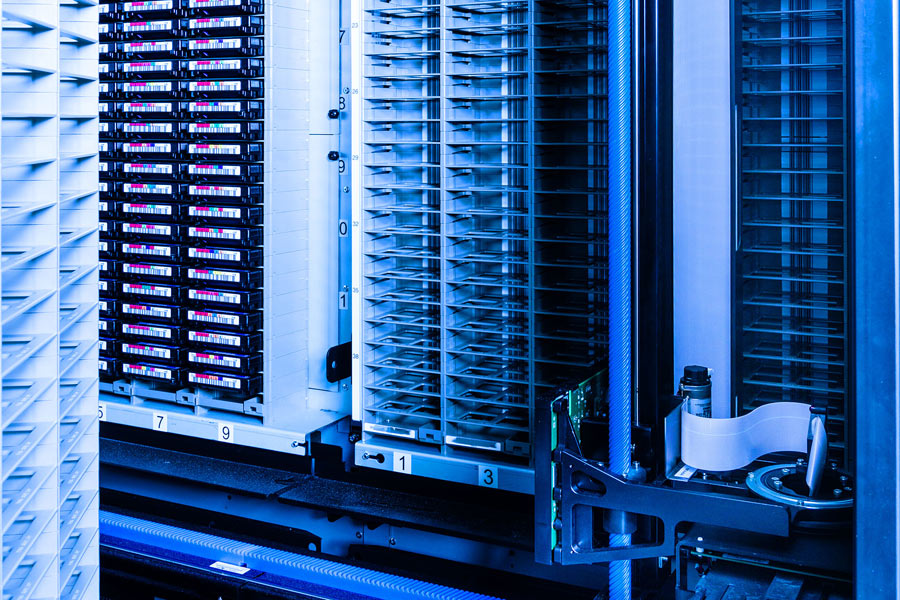What Makes a Data Center Future-Proof? Key Features for Sustained Success

In today’s rapidly evolving tech landscape, data centers are the backbone of the digital world, enabling everything from social media to cloud computing. As technology advances at a breakneck pace, the need to future-proof these data centers has never been more critical. Future-proofing ensures that data centers can adapt, grow, and remain efficient and secure in the face of ever-changing demands. Let’s dive into the key features that make a data center not just robust but ready to tackle the challenges of tomorrow.
Scalability and Flexibility
First off, let’s talk about scalability. Imagine your data center as a living organism that needs to grow and adapt continuously. Scalable infrastructure is essential for accommodating growth and technology updates without the need for complete overhauls. Modular design principles play a crucial role here. By incorporating modular elements, data centers can add or remove components as needed, adapting to changing business needs seamlessly. This approach not only saves time and money but also ensures that the data center remains agile and responsive to new technological advancements.
Resilience and Redundancy
Next up is resilience. In the world of data centers, resilience means the ability to maintain uptime and continuous operation despite challenges. This involves having redundant power systems, cooling solutions, and data backup strategies. Think of it as having a safety net. If one component fails, another steps in without missing a beat. This redundancy ensures that the data center can withstand and quickly recover from disruptions, whether they’re due to hardware failures, natural disasters, or cyber-attacks.
Energy Efficiency
Energy efficiency isn’t just a buzzword; it’s a vital aspect of future-proofing. Data centers consume vast amounts of energy, and sustainable practices can significantly reduce this footprint. Implementing energy-efficient cooling systems and power management protocols can drastically cut energy usage. Green technologies and renewable energy sources, such as solar and wind power, are becoming increasingly integral. Not only do these practices reduce environmental impact, but they also lower operational costs, creating a win-win situation.
Security and Compliance
In today’s digital age, security is paramount. Protecting data centers from cyber threats and physical breaches is essential. This includes implementing robust cybersecurity measures, such as firewalls, encryption, and multi-factor authentication. Compliance with industry standards and regulations, like GDPR and HIPAA, is also crucial. These frameworks ensure data integrity and build client trust by demonstrating a commitment to high security and privacy standards.
Connectivity and Edge Computing
Connectivity is the lifeblood of a data center. Robust connectivity ensures high-speed data transmission and reliable network performance. With the rise of edge computing, integrating this into your data center strategy can significantly enhance performance and reduce latency. Edge computing processes data closer to its source, which speeds up data handling and improves user experience. This is particularly vital for applications requiring real-time data processing, such as autonomous vehicles or smart cities.
Automation and AI Integration
Automation and AI are transforming how data centers operate. By integrating AI-driven technologies and automation, data centers can optimize their operations, making them more efficient and reliable. Predictive analytics, for example, can foresee potential issues before they become problems, allowing for proactive maintenance. Automation can handle routine tasks, freeing up human resources for more complex activities. This not only boosts efficiency but also enhances the overall performance of the data center.
Disaster Recovery and Business Continuity
Disaster recovery plans are a critical component of future-proofing. These plans outline strategies for minimizing downtime and ensuring business continuity in emergencies. Whether it’s a natural disaster, cyber-attack, or power outage, having a robust disaster recovery plan ensures that data can be quickly restored and operations can resume with minimal disruption. This capability is vital for maintaining trust and reliability with clients and stakeholders.
Sustainability Initiatives
Sustainability is more than a trend; it’s a necessity. Data centers must adopt initiatives that reduce environmental impact, such as efficient resource utilization and recycling programs. Certifications like LEED (Leadership in Energy and Environmental Design) and benchmarks for sustainable operations help guide and measure these efforts. Sustainable practices not only help the environment but also enhance the public image of the company, demonstrating a commitment to corporate social responsibility.
Conclusion
In conclusion, making a data center future-proof involves a multifaceted approach. It requires investments in scalable infrastructure, resilience, energy efficiency, security, and cutting-edge technologies like AI and automation. Emphasizing sustainability and robust disaster recovery plans also play critical roles. As the tech landscape continues to evolve, staying ahead of these changes ensures that data centers remain competitive, efficient, and reliable. For stakeholders, prioritizing these investments and strategies is essential for maintaining operational excellence and meeting the challenges of tomorrow head-on.


